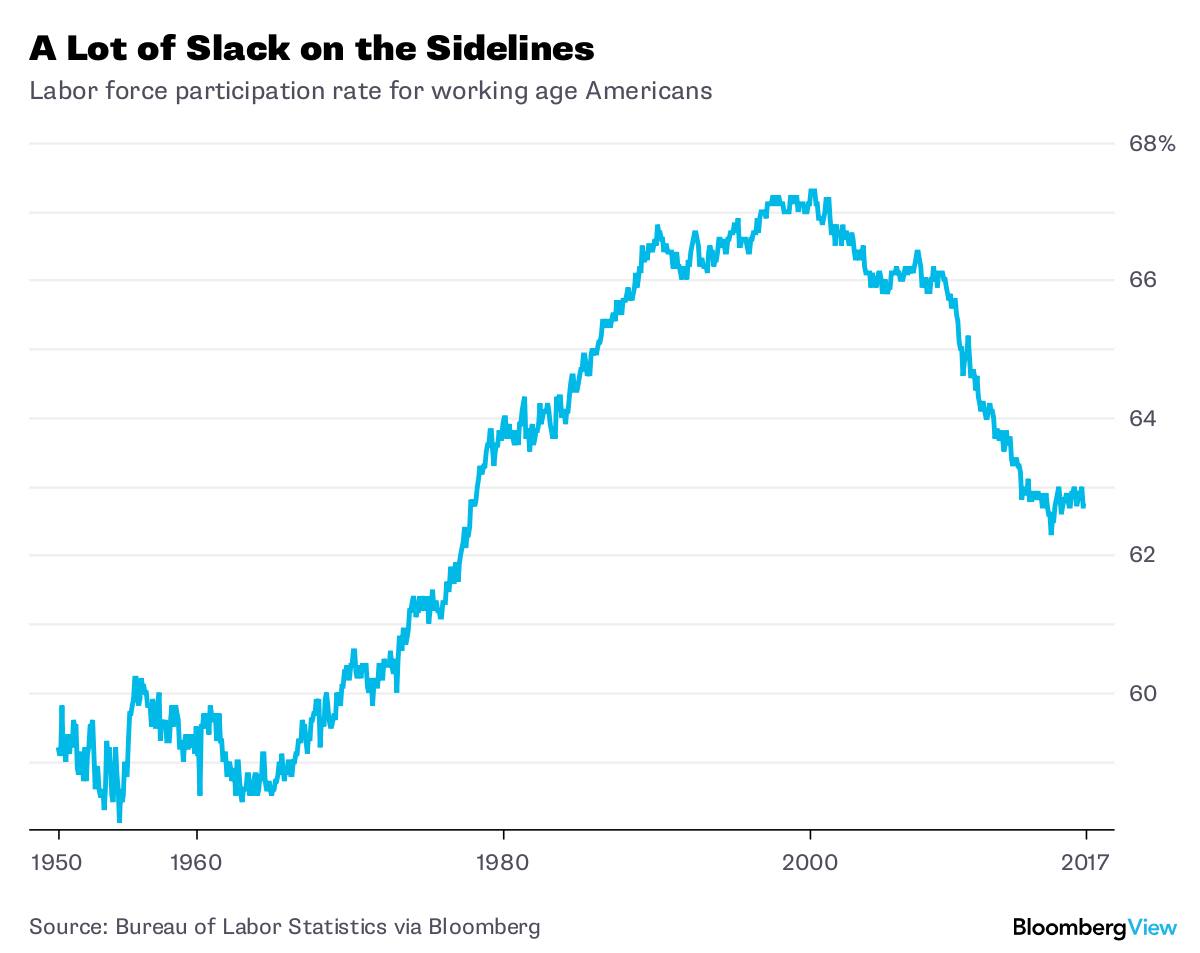Tight labor markets and rising minimum wages are leading to real pay increases for lots of Americans.
These are two economic trends I have been writing about for the past several years. The tightening job market was one of the hidden stories of the early stage of the recovery from the great financial crisis. Once the unemployment rate fell below 5 percent in early 2016, economists and others began recognizing what was more or less inevitable.
This has helped workers in the middle of the wage distribution, while new laws raising minimum wages are helping laborers at the bottom of the economic strata.
Before someone takes credit for these long-standing trends, let’s take a closer look at why wages are rising, and what it might mean for the broader economy.
Let’s begin with the minimum wage. For the past 10 years, labor organizers have been advocating for a national minimum wage of $15 an hour. Although they have been unsuccessful at the national level -- the federal minimum wage has been $7.25 since 2009 -- they have achieved significant increases at the state and city level. In 2018, 18 states have (or are scheduled to) raise their minimum wages. In addition, 22 cities will similarly raise wages.

The strongest argument in favor of raising the minimum wage nationwide is that it has failed to keep up with inflation and productivity. Had it done so, minimum wages would be at $11.62 or $19.33, respectively. The strongest argument against is that the country is really a collection of smaller, varied regional economies; by definition, some are much more prosperous than others. It shouldn't be shocking to say that poorer areas cannot be expected to pay the same wages of richer states and cities.
But here's what's interesting about areas that can justify rising minimum wages: First, there is a modest increase in wages across the lower end of the pay scale. It is more than just the minimum-wage workers seeing their pay rise; the more senior employees who were previously getting more than the minimum suddenly find themselves at parity with newer, junior employees. They often request increases to compensate for this -- or switch jobs for higher pay.
Second, wage increases typically lead to a modest uptick in the local economy. Theoretically, this leads to more job gains, and a virtuous cycle. Despite forecasts of doom and rising job losses, higher minimum wages have gone hand in hand with improving conditions in cities such as Seattle, Portland and San Francisco.
In other word, whether minimum wages have increased because of legislation in your state or city is almost irrelevant in markets with little labor slack. As we noted last year:








